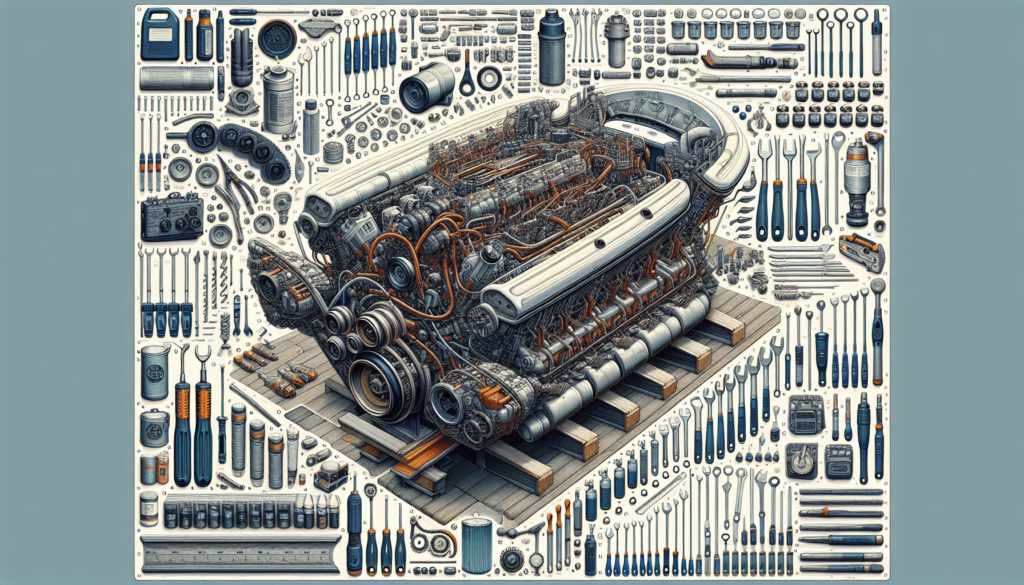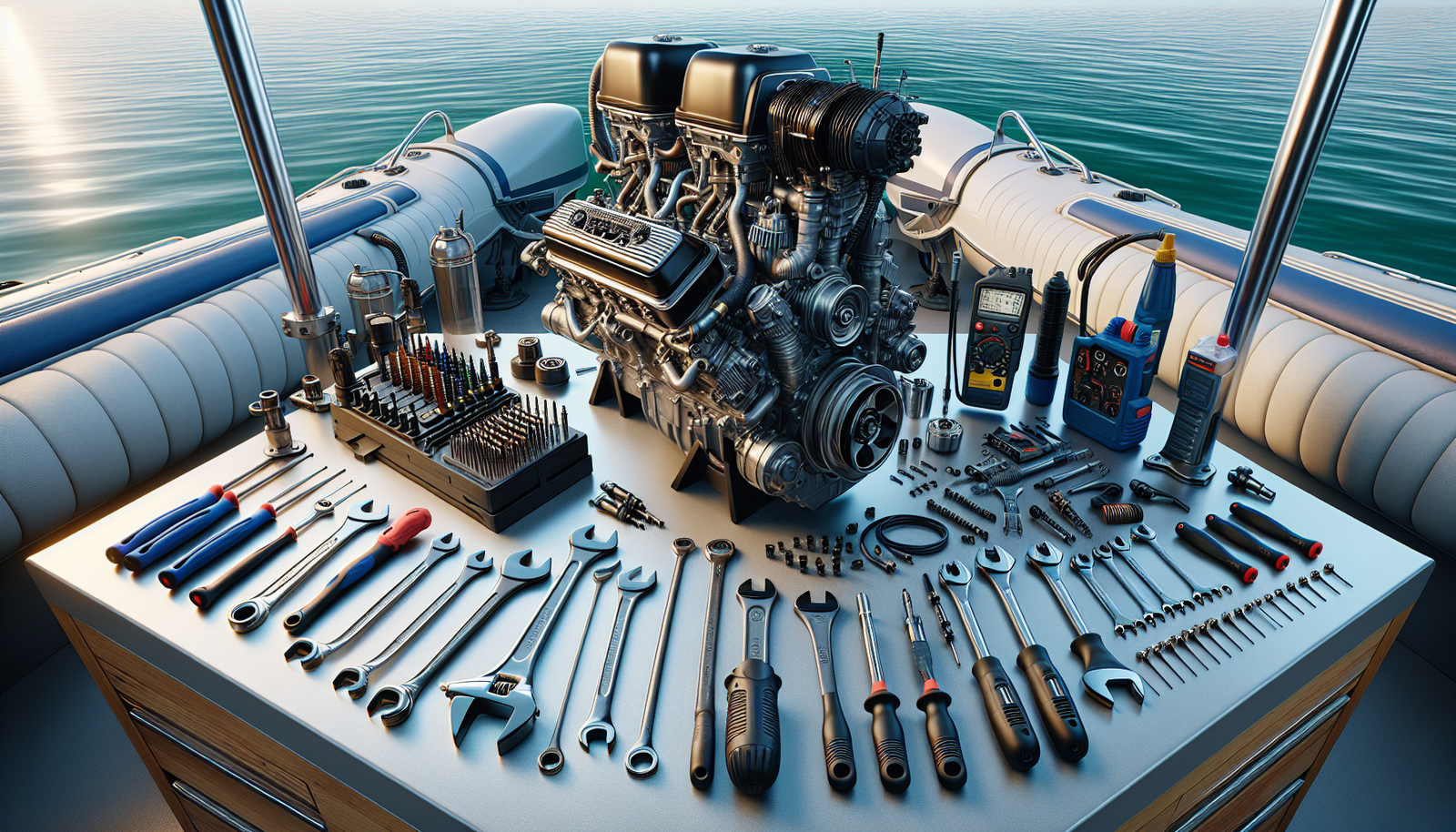Heading out for a big boating trip? Ensuring your boat’s engine is in its top form is critical for a hassle-free and enjoyable journey. In “The Ultimate Checklist for Servicing Your Boat Engine Before a Big Trip”, we arm you with a comprehensive and foolproof checklist – everything from checking your fuel systems to running a stress test on your engine. This is the guide you need to dispel any worries about your boat’s condition so you can focus on the fun part – hitting the open water and soaking up the sun.
Understanding Your Boat Engine
Owning a boat is akin to owning a car – you have to be familiar with its parts mainly the engine. Understanding your boat engine involves knowing its type, inspecting its manual, and recognizing the engine’s specific requirements.
Know your engine type
Boat engines come in a wide variety of types and each has its unique specifications and maintenance requirements. You could have an outboard, inboard, stern drive, or jet engine. Understanding this is the first step towards maintaining your boat engine. Make it your business to know the capacity, the fuel type, the horsepower, and the manufacturer of your engine.
Familiarize with engine manual
Every engine comes with a manual that provides the blueprint of its parts and functions. It outlines the type of maintenance it needs and how frequently it should be serviced. Become familiar with your engine manual, as it’s essentially your boat engine’s bible that provides insights on how to take care of it.
Recognize engine’s specific requirements
As one glove doesn’t fit all hands, one maintenance routine does not suit all engines. Know the specific requirements of your engine – type of oil it uses, the right spark plugs to use, the correct coolant to add, etc. Knowing these specifics helps to extend the life of your engine and keep it running smoothly.
Conducting Initial Visual Inspection
An initial visual inspection of the boat engine takes you one step further in understanding and maintaining your marine vessel.
Check for visible leaks
Leaks are usually a sign that something is not well-oiled or well-sealed. Regularly inspect the engine for any visible oil or coolant leaks. If you spot any leakage, you should immediately identify the source and fix it.
Inspect hoses and lines
The hoses and lines are vital for the engine’s fluid transport. Check them for cracks, swelling, or stiffness as these are signs of impending failure. Timely replacement can save you costly repairs in the future.
Look for corrosion or damage
Inspect the engine’s exterior for signs of corrosion or damage. Unchecked, this can cause extensive damage to the engine.
Verify fluid levels
Your engine relies on various fluids like oil, coolant, and transmission fluid for its efficient operations. Regularly check their levels and top them as required per the engine manual.

Changing the Engine Oil and Filter
Changing your boat’s engine oil and filter is a vital part of your engine maintenance routine as they play an integral part in lubricating the engine’s components.
Prepare necessary tools for oil change
Before you start, ensure that you have the right tools for the job – oil filter wrench, oil catch pan, and the right type and amount of engine oil.
Drain old engine oil
With the engine warm, remove the drain plug and let the oil drain into the catch pan. This helps to remove the oil more effectively as warm oil flows easier and can suspend particles that might have settled at the bottom of the engine.
Remove and replace oil filter
Using your wrench, carefully remove the old oil filter. Apply a thin layer of new engine oil on the gasket of the new oil filter before installing it, this helps create a tight seal.
Add new engine oil based on specifications
Refer to your engine’s manual to determine the correct type and amount of oil to add. Overfilling or using the wrong oil can cause damage to the engine.
Checking and Replacing the Fuel Filter
The fuel filter aids in ensuring that only clean fuel goes into your engine.
Locate the fuel filter
Depending on your boat’s engine type, the fuel filter may be located in different places. Consult your engine manual for its location.
Assess condition of the fuel filter
Inspect the fuel filter for clogs and dirt, both of which can limit fuel flow to the engine leading to poor performance or engine damage.
Replace if necessary
If the fuel filter is beyond cleaning or if it’s been a while since the last replacement, replace it. Always have a spare filter onboard.
Make sure it’s secured properly after replacement
After replacement, ensure that the filter is secured properly to avoid leaks or disconnections during operation.

Assessing the Cooling System
The cooling system is vital for dissipating heat from your boat’s engine to keep it at an optimal operating temperature.
Check coolant level
Regularly check the coolant level in the reservoir, if it’s low, top it up with the correct coolant as stipulated in your engine’s manual.
Inspect for leaks in the cooling system
Examine your engine for any coolant leaks, which can lead to overheating.
Flush and replace coolant if necessary
Over time, the coolant becomes dirty and less effective, necessitating a replacement. A coolant flush keeps your engine running efficiently.
Check condition of belts and hoses
Belts and hoses are necessary for the proper functioning of the cooling system. Check for any visible signs of wear or damage and replace them as needed.
Inspecting the Exhaust System
Your boat’s exhaust system helps direct exhaust gases away from the engine, contributing towards your engine’s performance, fuel efficiency, and safety.
Check for exhaust leaks
Leaks in the exhaust system can be dangerous leading to carbon monoxide buildup. Conduct a regular check to spot any leaks.
Verify proper functioning of muffler
The muffler reduces the noise produced by the engine’s exhaust gases. Make sure it’s properly functioning so you can enjoy a peaceful sail.
Inspect exhaust manifolds
They play a vital role in ensuring exhaust gases are properly ejected. Regularly inspect them for leaks and cracks.
Evaluate condition of exhaust pipes
Exhaust pipes channel the gases away from the engine. Inspect them for any signs of corrosion, damage or leaks.
Checking the Ignition System
Your ignition system is a critical aspect of your boat’s engine as it’s necessary for starting your boat and keeping it running.
Check condition of spark plugs
Regular inspection can prevent problems down the line. A worn-out or fouled spark plug can lead to engine misfires.
Ensure ignition switch is functioning properly
A faulty ignition switch can create problems starting your boat. Regular checks and maintenance can prevent this.
Examine battery and terminals
Ensure battery is well-charged, and terminals are clean and tight. A weak battery can’t supply the necessary power to the starter, preventing the engine from starting.
Test the performance of ignition coils
Ignition coils play a vital role converting battery’s low voltage to the thousands of volts needed to create an electric spark in the spark plugs, which ignites the fuel.
Validation of the Transmission System
A boat’s transmission system plays an essential role in propelling your boat forward or in reverse.
Check transmission fluid
Transmission fluid lubricates, cools, and cleans the inside of your transmission. Low or dirty fluid can lead to transmission problems.
Inspect and feel for smooth gear shifting
Ensure gears shift smoothly, any hesitation or struggle could indicate possible issues.
Examine propeller shaft and other alignment
The propeller shaft and alignment are key to your boat’s movement. Check for any damage or misalignment that could affect your boat’s efficiency.
Evaluation of the Charging System
A well-maintained charging system ensures your boat’s battery stays charged and ready for use.
Inspect alternator belt
The alternator belt helps charge the battery while the engine runs. Keep an eye on its condition, any wear or tear can lead to a poorly charged battery.
Check voltage output
Use a multimeter to measure the voltage output from your alternator, it should be within the recommended range specified in your engine manual.
Evaluate battery for possible replacement
Assess the overall health of your battery. If it frequently dies or doesn’t hold a charge, it might be time for a replacement.
Planning Your Boat Engine Maintenance Schedule
Habitual maintenance is the key to extending the lifespan of your boat engine and ensuring your safety on the water.
Keep a regular maintenance schedule
Avoid random inspections, but instead stick to a regular schedule to avoid forgetting some aspects.
Document past and future services for reference
Document all previous services, repairs, part replacements, etc., to keep track of what has been done and what needs to be done.
Understand the signs of possible engine trouble
Educate yourself on the warning signs of engine trouble like strange noises, excessive smoke, or reduced performance. Early detection and prevention can save you expensive repairs.
Plan for regular engine check up before and after trips
Before you set sail, ensure your engine is ready for the trip to avoid breakdowns in the middle of the waters. Upon return, give your engine a once over to note any issues that occurred during the trip. This proactive approach can prevent small issues from turning into bigger, costlier ones.

